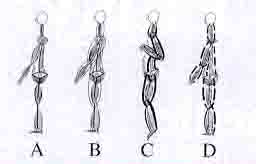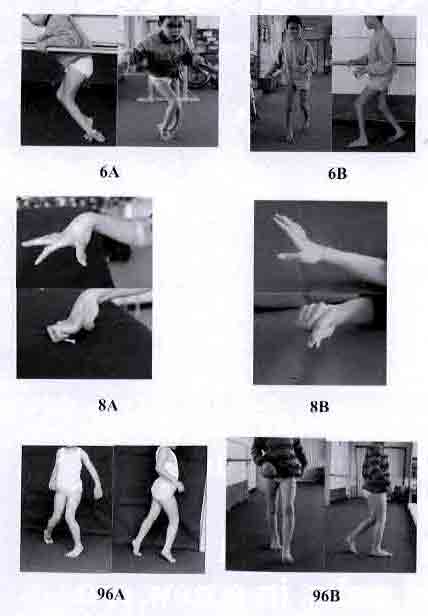Cerebral Palsy:
Orthopaedic
Selective
Spasticity-control Surgery
and surgical techniques
are documented,
leading the treatment
of cerebral palsy in a new era
International orders it's easy to order! 88352-021-8 C3047 ¥15000
in cerebral palsy(Fig.1ABCD).
A: Antigravity muscles which support the body to
be upright.
B: Multiarticular muscles co-exist in human body.
C: Black lines show hypertonicity of the multiarticular
muscles.
D: The multiarticular muscles are lengthened or
sectioned selectively, then hypertonicity of these
muscles are reduced. The monoarticular muscles are
preserved and facilitated.

problems in motor activities and ADL with encouraging results while providig a new path for
functional improvements in cerebral palsy (Fig.6AB,8AC,96AB,109AB,113AB).

Spastic diplegia,
non-ambulatory
6A: Crouched posture with marked
flexion and adduction
deformity of the hips was
observed.
6B: Seven years after OSSCS on the
hips,, knees and foot and ankle.
He is now a community
ambulator with crutches. He is
also an independent ambulator
in the house.
Fig. 8: 18-year-old male,
Athetosis quadriplegia
8A: Involuntary movement
and deformities of the fingers,
thumb and wrist with rigidity
were characteristic.
8C: After OSSCS, rigidity and
deformity of the fingers,
thumb and wrist were reduced,
and dexterity of the fingers improved.
Fig. 96: Improvements in gait
after OSSCS
96A: A 9-year-old girl.
Spastic diplegia
Preoperatively, crouched
posture with marked equinus
in feet and internal rotation of
both the hips were observed.
Lumbar lordosis was also
characteristic.
96B: Postoperatively, correction of
equinus was achieved.
Crouched posture was also
corrected without operations on
the hips and knees. Stability
during gait was also improved.